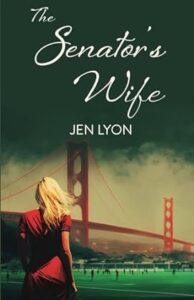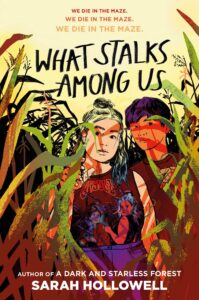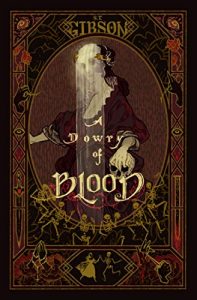Since reading The Senator’s Wife, I’ve been thinking about what exactly my criteria is for rating a book with five stars. Anne of Green Gables is the first five-star book I ever read; Anne of Avonlea was, unsurprisingly, the second. The three books by Jeanette Winterson that were the subject of my undergraduate thesis—The Passion, Written on the Body, and The PowerBook—are all rated five stars. The only book that I rated five stars in 2023 was Jennette McCurdy’s I’m Glad My Mom Died. I rated Iris Kelly Doesn’t Date, Written in the Stars, and Count Your Lucky Stars each with a 4.75 on Storygraph.
I’m not defending my five-star rating of The Senator’s Wife. I have to admit, though, that I’m still trying to understand just what it was about Jen Lyon’s novel/series that drew me in so forcefully. That admission notwithstanding, if I could offer some advice, it would be to dive into this 1000+ page odyssey as soon as you can. I read the entire story in three days—it would have taken less time if it weren’t for pesky nuisances like work and sleep.
Alex Grey, a professional soccer player and national team hopeful, is spending some well-deserved R&R with her lifelong friend Caleb on Daufuskie Island. Meanwhile, after a couple of decades spent dealing with her boorish husband, Catharine Cleveland, the titular senator’s wife, has begun making a habit of slipping away from the senator’s plantation mansion to spend a few minutes alone on the boat that she loves so much. As the weather turns unfavorable, Alex sees a small boat struggling against strong winds; when the boat capsizes, she dives in to try and save a life. The life that Alex saves belongs, of course, to Catharine.
This initial set of events takes place no more than ten miles from where I’m currently sitting. Admittedly, that fact doesn’t contribute to this review, but it is kind of neat, don’t you think?
Lyon switches between Alex’s perspective and Catharine’s perspective throughout The Senator’s Wife and the two subsequent novels, Caught Sleeping and Whistleblower. Alex grew up in South Carolina, taken in by extended family and raised conservative and religious. Spending her entire life within the confines of a single state—a small, narrow-minded one at that—Alex dreams of a bigger life. Catharine, meanwhile, has had “a bigger life,” one that has been defined by a bargain made with her father decades ago: marry a man she doesn’t care for and gain control of the family’s shipping company. Though she lives a life of wealth and privilege, managing the company better than her father ever could, Catharine still feels confined and without much agency. When Alex and Caleb bring Catharine back to Senator Cleveland’s mansion on that stormy day, neither Alex nor Catharine could predict how entwined their lives would become.
That’s right! Somebody is going to get a toaster oven, but not before what feels like the slowest of slow burns. To make matters even more engaging, somebody has a “deep, dark secret.” There’s also the matter of an age gap with which to contend. What I’m trying to say is that this book has everything. We start on Daufuskie Island, but end up in Charleston, Portland, San Francisco, Denver, and… well, if Taylor Swift stopped there on the Eras Tour, there’s a good chance Alex and Catharine spend time there as well. Eventually, the story will take an international turn, but that is another story. Except, well, it isn’t.
Don’t go into The Senator’s Wife expecting a trilogy. Caught Sleeping is not about one of Alex’s teammates or Catharine’s best friend Nathalie: it’s the middle third of Alex and Catharine’s story. Lyon’s trilogy is best thought of as an epic novel, not unlike Shōgun or The Pillars of the Earth. (All three books were released in 2023, suggesting that the trilogy was written as an epic.) The Senator’s Wife begs to be turned into an epic miniseries like The Thorn Birds or Noble House. Except with women who love other women. And some of those women are foul-mouthed Australians. (Hmm, I think I might be figuring out the whole five-star rating thing.)
Another expectation one should have going into this epic is angst. I mean, secrets and slow burns have to be accompanied by some angst, right? Well, imagine the angstiest romance you’ve ever read, double the angst, and that’s about the level you’ll find in The Senator’s Wife. Compared to what Alex and Catharine go through, every obstacle that I’ve seen romance novel characters go through seems trivial. These two women get put through an emotional ringer. To me, though, even though the scope of the story is—once again—epic, it never felt overwrought to me. The lives that these people lead do not resemble my life at all, but the plot and all of its angst never felt so overblown that I was taken out of the moment.
When it comes to being taken out of the moment, though, there is one more thing that you should know before picking up The Senator’s Wife. Based on the elements of the story that I’ve described above along with a basic knowledge of the romance genre, it shouldn’t be considered a spoiler to mention that the romance of this story happens within the context of an affair. (The title of the novel also kind of gives it away.) If that context bothers you… well, it bothers me too. I held off a bit on starting this book because of how much that bothers me. After Catharine’s first interaction with Senator Cleveland, though, it is clear that he is abusive. That’s an ethical conundrum on which your mileage will certainly vary. For what it’s worth, Lyon does a pretty good job of depicting what it’s like to escape an emotionally abusive marriage. Having lived that experience, I think Lyon might have actually done too good of a job. There were a couple of spots where I had to get up and walk away for a little while.
The Senator’s Wife has a lot to say about what it means to grow up and become a person who isn’t solely defined by who you were as a child, where you grew up, and who raised you. Senator Cleveland and Caleb are prime examples of people who only know one way to live, become confined by that one way, and then try to confine everyone around them to that same small, narrow view of the world. Though Catharine and Alex have already seen the cracks in those narrow worldviews, their discovery of each other helps them break through to finally be part of a larger world. Even if it’s difficult. Even if there are significant risks. Even if there are no guarantees.
If there is one last piece of advice that I could offer, it would be this one: Before diving into The Senator’s Wife, make sure that you hydrate, because there will be tears.
Content warning: cheating/affair, domestic violence, blackmail, revenge porn
Liv (she/her) is a trans woman, a professor of English, and a reluctant Southerner. Described (charitably) as passionate and strong-willed, she loves to talk (and talk) about popular culture, queer theory, utopias, time travel, and any other topic that she has magpied over the years. You can find her on storygraph and letterboxd @livvalentine.



